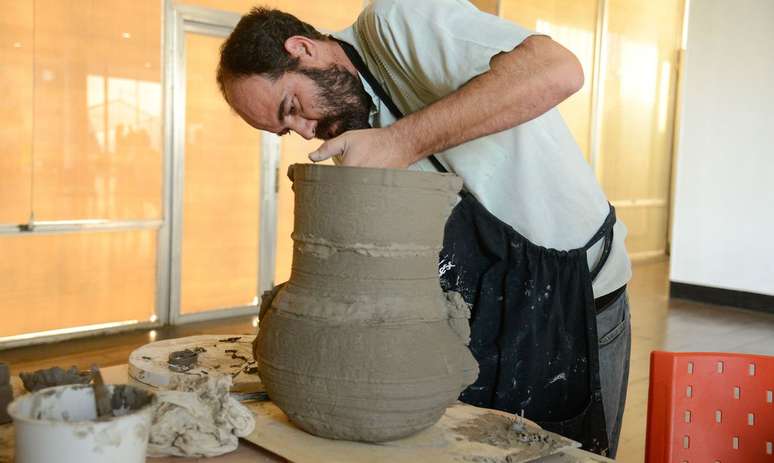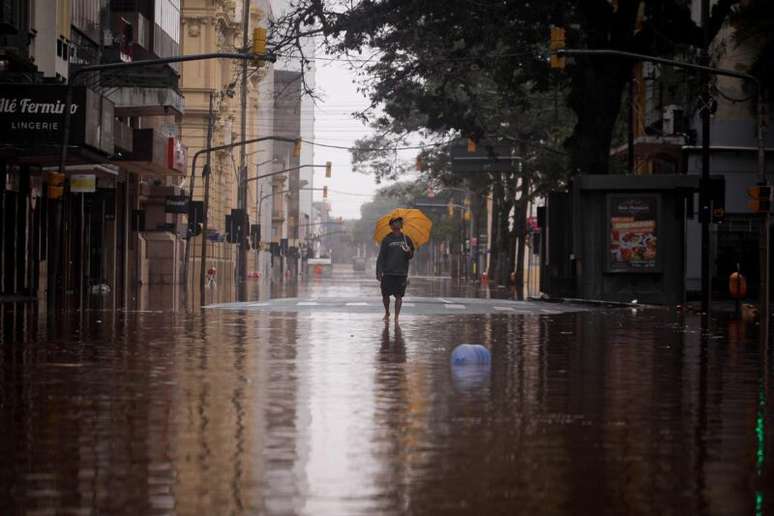The collection can be seen at the Emílio Goeldi Museum, in Belém
The digitization of the archaeological pieces has allowed the potters of Pará to produce works in harmony with the art of the ancient Brazilian indigenous communities. A 3D collection – produced by a Belgian studio – is available for consultation at the Emílio Goeldi Museum, in Belém. At the same time, a project tries to reproduce ancestral pieces through a 3D printer.
The collection is collected on the Atlas of Lost Finds platform, by the Belgian design studio Unfold, specialized in the creation and digital printing of ceramic pieces. Initially, it was intended to collect objects from the National Museum that had been scanned in the 20 years before the 2018 fire. Later, they started including 3D images of ancestral ceramic pieces of the Marajoara culture that are scattered all over the world in the collection .
Collaborator on the work, visual artist Anita Ekman believes 3D scanning allows for symbolic repatriation. According to her, there are partnerships with several museums where the collections are located, such as the Peabody Museum in Harvard, the Quai Branly Museum in France, and the Ethnological Museum in Berlin, as well as eight Brazilian museums, such as the Museum of Archeology and Ethnology of the University of São Paulo (USP).
material heritage
“The repatriation of this heritage of indigenous peoples, which is scattered throughout the world, has not yet become an agenda. No official request has yet been made. The idea of the project is to know where they are and how they are being treated and exhibited, rather than recovering the material heritage, it is necessary to understand and re-signify the meaning of this archaeological heritage starting from the vision and safeguarding of the intangible heritage of the communities, of the people of the forest”, explained Anita.
For her, the pieces can be recreated through the Replicando o Passado project, developed by the Emílio Goeldi Museum, considered the largest museum in the Amazon with archaeological collections.
The initiative is developed in collaboration with Atelier Mangue Marajó. “Potters from the region go to the museum to see and study these 3D scans and replicate the pieces. We call it repatriation, that is, return to mother earth, return to origin,” she explained.
An example of this work is the Berlin Urn, a Marajoara urn in the shape of a pregnant woman, which is located in the Ethnological Museum of Berlin, and has been reproduced by the ceramists of the project.
The technology can also be used in playing parts. Last weekend, Anita Ekman was one of the curators of the exhibition Ore ypy rã-Tempo de Origin, held at the Museum of Modern Art of Rio de Janeiro (MAM).
For the occasion, a 3D printer created to work with clay was used. Developed by artist Chico Simões, the equipment uses free Brazilian software technology. “For this project, I retrofitted a seven-year-old printer to a 3D printer capable of working with clay,” he explained.
National Museum
In the public eye, a Marajoara urn lost in the National Museum fire was replicated. The recreation was on a smaller scale, 50% of the original. The piece is a burial urn found on Ilha do Marajó, in Pará, and dates to 1400-400 BC (before Christ). Chico remained faithful to his invention throughout the process. “It’s a job that takes time. We thought we could do it all in one day. But, to make it come as we wanted, we did the first part on Friday and the rest on Saturday,” he explained.
The show Ore ypy rã-Tempo de Origin was born from the mapping of the archaeological finds of the indigenous peoples of Brazil scattered in museums in the United States and Europe. It is a work developed since 2021 by Sandra Benites (Guarani Nhadeva), who signed the curatorship of the event together with Anita Ekman.
His research led to the mapping, with the help of archaeologist Cristiana Barreto, specialist in Marajoara collections, funerary urns from Ilha de Marajó and shell zooliths (artifacts carved in stone) from Santa Catarina, scattered in more than 20 institutions in Worldwide.
Source: Terra
Rose James is a Gossipify movie and series reviewer known for her in-depth analysis and unique perspective on the latest releases. With a background in film studies, she provides engaging and informative reviews, and keeps readers up to date with industry trends and emerging talents.







